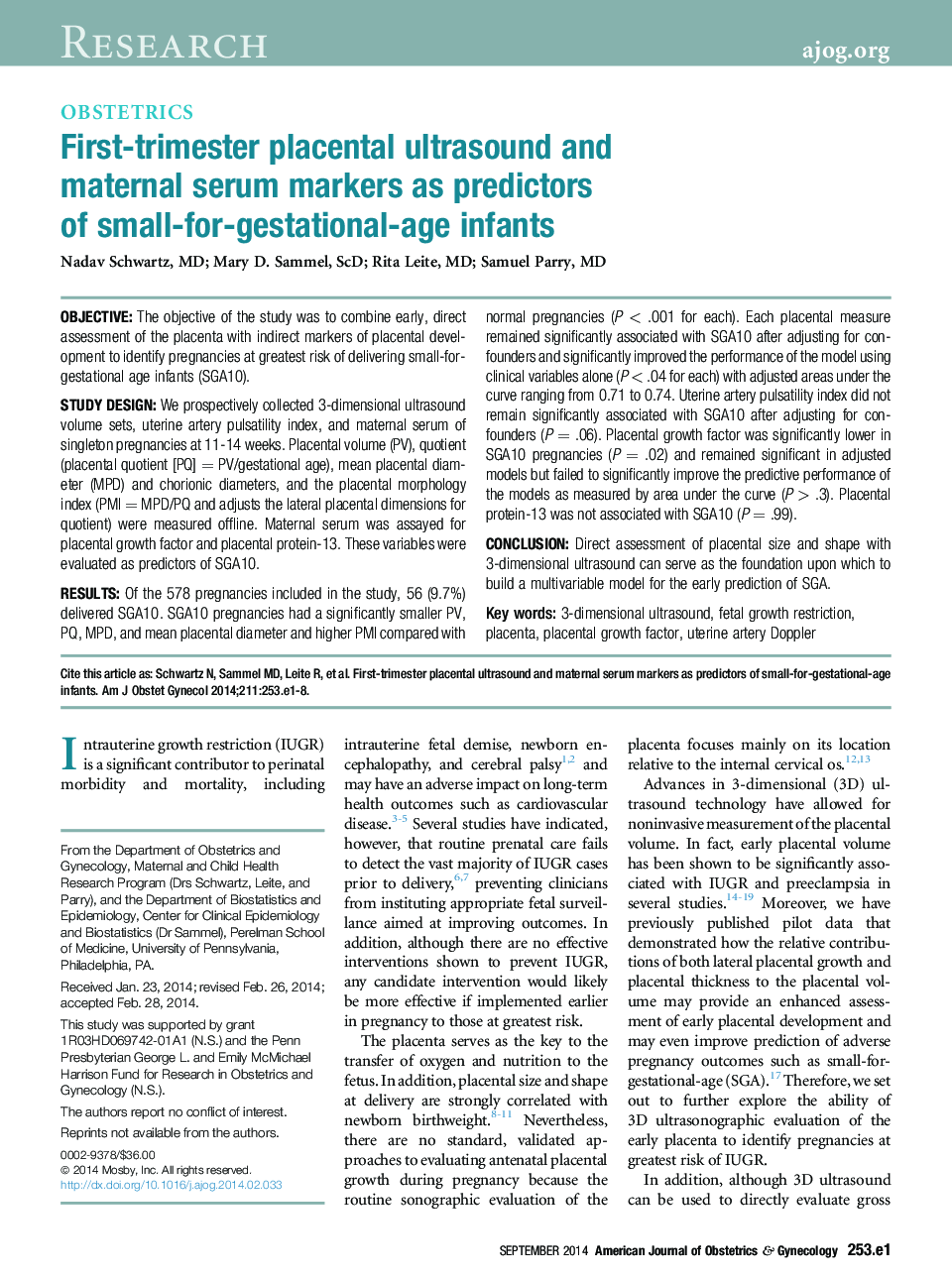| Article ID | Journal | Published Year | Pages | File Type |
|---|---|---|---|---|
| 6145748 | American Journal of Obstetrics and Gynecology | 2014 | 8 Pages |
ObjectiveThe objective of the study was to combine early, direct assessment of the placenta with indirect markers of placental development to identify pregnancies at greatest risk of delivering small-for-gestational age infants (SGA10).Study DesignWe prospectively collected 3-dimensional ultrasound volume sets, uterine artery pulsatility index, and maternal serum of singleton pregnancies at 11-14 weeks. Placental volume (PV), quotient (placental quotient [PQ]Â = PV/gestational age), mean placental diameter (MPD) and chorionic diameters, and the placental morphology index (PMIÂ = MPD/PQ and adjusts the lateral placental dimensions for quotient) were measured offline. Maternal serum was assayed for placental growth factor and placental protein-13. These variables were evaluated as predictors of SGA10.ResultsOf the 578 pregnancies included in the study, 56 (9.7%) delivered SGA10. SGA10 pregnancies had a significantly smaller PV, PQ, MPD, and mean placental diameter and higher PMI compared with normal pregnancies (P < .001 for each). Each placental measure remained significantly associated with SGA10 after adjusting for confounders and significantly improved the performance of the model using clinical variables alone (P < .04 for each) with adjusted areas under the curve ranging from 0.71 to 0.74. Uterine artery pulsatility index did not remain significantly associated with SGA10 after adjusting for confounders (PÂ = .06). Placental growth factor was significantly lower in SGA10 pregnancies (PÂ = .02) and remained significant in adjusted models but failed to significantly improve the predictive performance of the models as measured by area under the curve (P > .3). Placental protein-13 was not associated with SGA10 (PÂ = .99).ConclusionDirect assessment of placental size and shape with 3-dimensional ultrasound can serve as the foundation upon which to build a multivariable model for the early prediction of SGA.
